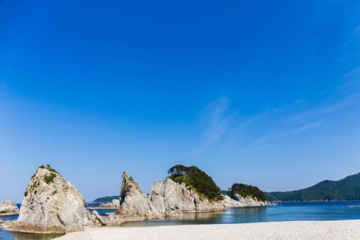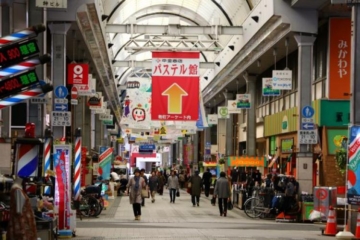MODEL COURSE
- Morioka Station
- Takuboku newlywed house
- Iwate Bank Red Brick Building
- Morioka Takuboku/Kenji Seishunkan
- Morioka History and Culture Museum
- Morioka city (accommodation)
- Morioka handmade village
- Koiwai Farm Makibaen
- Hachimantai Aspite Line
- Hachimantai
- Hachimantai city (accommodation)
- Appi plateau
- Ishigami no Oka Art Museum
- Iwate Numamiyauchi Station
Morioka Station
 10 minutes
10 minutes
Takuboku newlywed house

This is the house where the newlywed Takuboku lived for about three weeks starting in 1903, and is the only remaining samurai residence in Morioka. He wrote about this time in his essay ``My four and a half tatami mats''.
Detailed Destination Information 18 minutes
18 minutes
Iwate Bank Red Brick Building

It opened as Iwate Bank Red Brick Building on Sunday, July 17, 2016. Built to the design of Kingo Tatsuno and Manji Kasai Architects, the former Morioka Bank is built of red brick with a green dome, and its exterior has a strict Renaissance-style outline. Located in the center of the city, it combines with the Nakatsu River and Nakano Bridge to form Morioka's representative landscape. A nationally designated important cultural property built in 1909.
Detailed Destination Information 2 minutes
2 minutes
Morioka Takuboku/Kenji Seishunkan

The Morioka Takuboku and Kenji Youth Museum is located in the former Dai Kuju Bank, which was completed in 1908, and introduces the town of Morioka where Takuboku Ishikawa and Kenji Miyazawa grew up and their youth.
Designated as a National Important Cultural Property on July 6, 2004
 4 minutes
4 minutes
Morioka History and Culture Museum
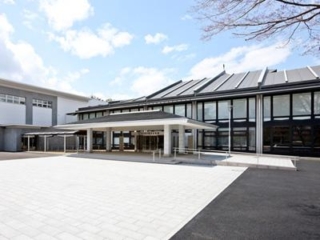
The building, which had been used as the Iwate Prefectural Library, was completely renovated and opened in 2011 in a corner of Morioka Castle Ruins Park (Iwate Park). The first floor introduces Morioka's festivals (Chagu Chagu Umako, Morioka Sansa Odori, Morioka Autumn Festival floats) and seasonal tourist information, while the second floor displays the history of the Morioka clan and the treasures of the Nanbu family. There is also a cafe (rest area ``Fukikata''). Please stop by to experience the history and culture of the castle town of Morioka and enjoy walking around the town.
Detailed Destination InformationMorioka city (accommodation)

Morioka handmade village

With the concept of "see, touch, create," this facility brings together Morioka's traditional techniques such as crafts, folk crafts, and food.In addition to a handmade workshop zone with 15 workshops, over 4,000 types of local products are on display and for sale. is also being carried out. The handmade workshops are especially popular, and you can see up close how the craftsmen use their traditional methods, as well as receive instructions directly from the craftsmen as you create your own original work.
Detailed Destination Information 18 minutes
18 minutes
Koiwai Farm Makibaen
One of the largest private integrated farms in Japan, popular as a spot connected to Kenji Miyazawa.
At the tourist area "Makiba-en" located in the center of the farm, you can enjoy various attractions and gourmet food, as well as guided tours of production sites that are closed to the public.
In February 2017, 21 buildings on the farm were designated as nationally designated important cultural properties.
 66 minutes
66 minutes
Hachimantai Aspite Line
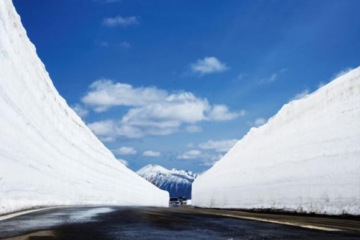
Aspite" is the name given to a volcano shaped like a shield lying face down. The 27-km driveway spans both Iwate and Akita prefectures and crosses the Hachimantai Mountains. The Hachimantai Aspite Line, which will be closed to winter traffic in mid-April, is a "snow corridor" with several meters of snow still remaining on both sides of the road. The snow corridor will be open to traffic from mid-April to November. The line is open to traffic from mid-April to early November. However, the road may be closed when there is a danger of freezing.
2024 Season】
Scheduled to open from 10:00 a.m. on Monday, April 15, 2024>
Please note that the schedule is subject to change depending on weather conditions.

Hachimantai
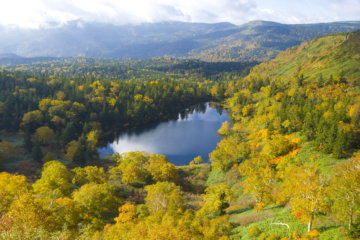
Hachimantai, a part of Towada-Hachimantai National Park, straddles both Iwate and Akita prefectures, and includes a plateau centered on the mountains that form the backbone of the Ou Mountains, Genta-Mori and Mt. Chausu to the east, and Mt. Hakudake and Fujishichi Onsen to the south. , is used as a general term that includes the western Minoyu and Yakeyama areas. It has an aspite-like topography, with numerous crater marshes such as Hachimanuma among the sea of Betula birch and Aomori fir, and alpine plants such as day lily and skunk cabbage spread out around the gentle walking path. Additionally, there are the Hachimantai Aspite Line and Hachimantai Jukai Line, which are great driving courses that allow you to fully enjoy nature while admiring the majestic view of Mt. Iwate, and there are parking lots and rest houses at the prefectural border.
Detailed Destination Information 37 minutes
37 minutes
Hachimantai city (accommodation)
 23 minutes
23 minutes
Appi plateau
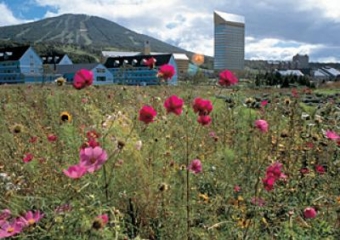
A plateau of approximately 3,500 hectares that extends to 40 degrees north latitude, centered on Mt. Appi.
The walking path through the secondary beech forest is popular as an easy trekking course.
You can see alpine plants, wild vegetables, mushrooms, and a breeding ground for the forest tree frog.
 39 minutes
39 minutes
Ishigami no Oka Art Museum
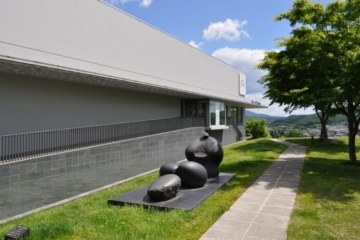
Opened in 1993 as the first outdoor sculpture museum in Iwate Prefecture. Reopening on June 18, 2021.
The outdoor exhibition hall has been reborn as a ``Flower and Art Forest'' where you can enjoy not only sculptures but also lavender, hydrangeas, blueberries, and more than 100 types of flowers.
 3 minutes
3 minutes
Iwate Numamiyauchi Station





